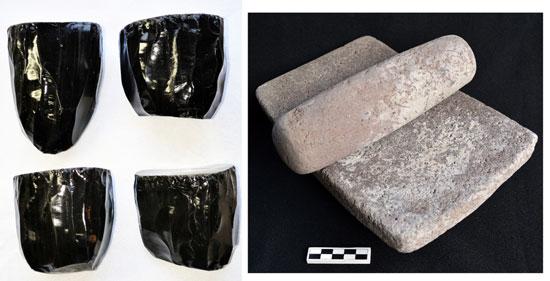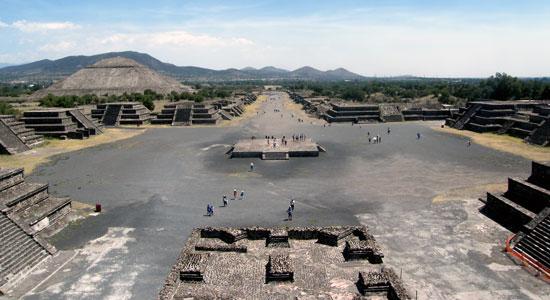PART.2
Domestic Economy
The main impetus for migration to Teotihuacan, which appears to have been ongoing during its centuries of occupation, was a robust economic system with links to the diverse resource zones of Mesoamerica. Compound 17 has abundant evidence of having housed specialists in the production of prismatic blades made from obsidian, which would have been a tradable commodity within the city and farther afield. From 77 cubic meters of excavations in 2013 we recovered over 415 kilograms of obsidian, including the cores from which blades were struck and the entire sequence of associated byproducts. These remains are being analyzed by Ken Hirth and students from Penn State. Highly variable skill level is apparent, indicative of apprenticeship in this trade and its multigenerational undertaking within the compound. Involvement in this utilitarian craft industry provided the occupants of Compound 17 access to other commodities acquired through market exchange and trade networks.
In addition to obsidian, laboratory analyses of pottery, food remains, human remains, personal adornment, and other materials are ongoing and will provide new insights regarding daily life and household economies at Tlajinga. We are particularly interested in evaluating how domestic economies articulated with civic institutions and with regional and macro-regional economies, and how residents of the district varied in their socioeconomic status and access to resources. We aim to better understand the relative values of different economic activities and how families both provided for themselves and networked with others for resources they did not produce.
 (Left) Obsidian blade cores; (Right) Mano and metate grinding tools
(Left) Obsidian blade cores; (Right) Mano and metate grinding tools
The Southern Street of the Dead
 Northern Street of the Dead viewed from the Moon Pyramid looking south towards Tlajinga.
Northern Street of the Dead viewed from the Moon Pyramid looking south towards Tlajinga.
One of Teotihuacan’s most distinctive urban features is its central artery, named the Street of the Dead by the Aztecs (we do not know what the Teotihuacanos themselves called it). This central avenue stretched over five kilometers and tethered the central monuments and outer neighborhoods of the city. Although every year millions of tourists stroll along the reconstructed northern Street of the Dead, we actually know remarkably little about its initial construction and the processes by which it developed. This deficiency is even more acute for the southern Street of the Dead, which has not been reconstructed. Was the street planned and constructed in its entirety or in increments, beginning in the north and developing south with urban sprawl?
Excavations in the southern Street of the Dead, where it passes through the Tlajinga district, show that construction involved cutting through tepetate, the hard volcanic tuff substrate of the region. Whereas this major labor project is suggestive of strong central planning (from the top down), the modest construction exhibited in walls delimiting the street is more consistent with local level processes (from the bottom up). We are assessing the developmental trajectory and organizational dynamics of the Street of the Dead using various lines of evidence, particularly micromorphological analyses conducted by Mareike Stahlschmidt. These will allow us to date the expansion of the city to the south and evaluate how planned the process was.